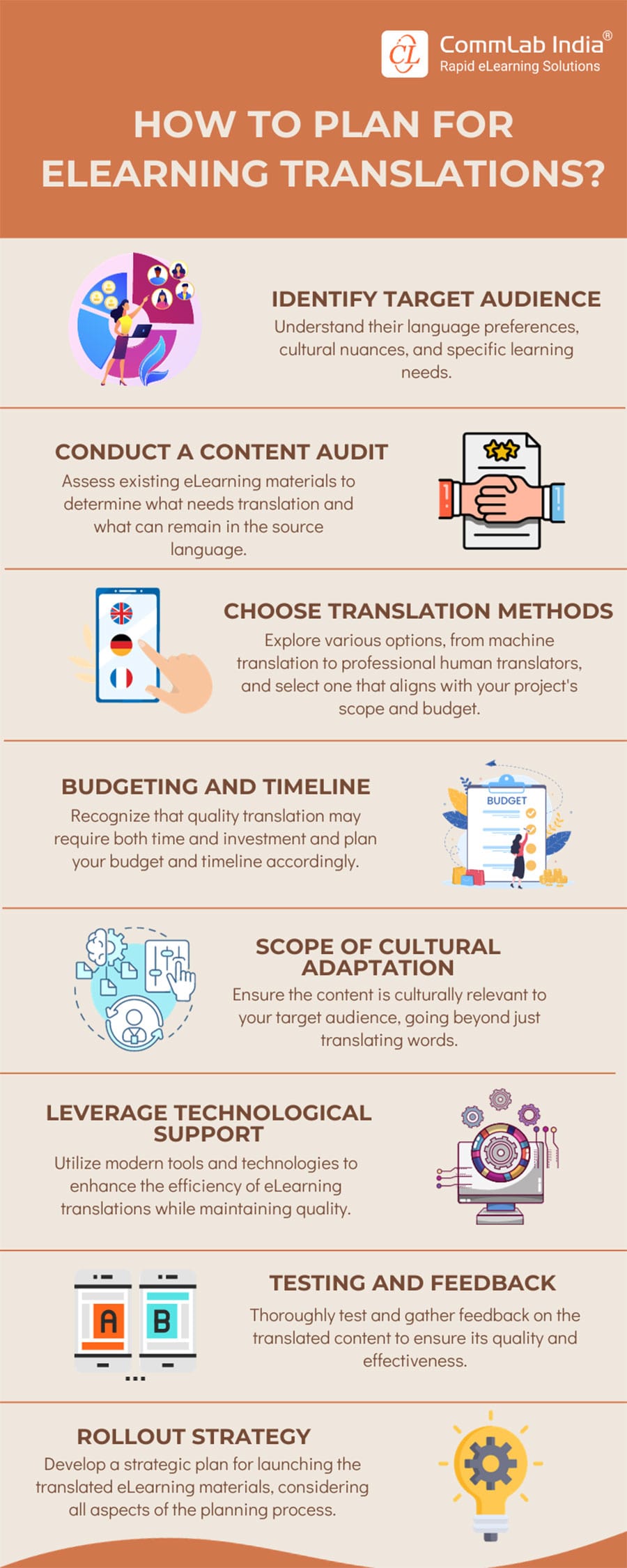Optimizing eLearning Translations for Skyrocketing Global Learning [Infographic]
Optimizing eLearning translations caters to diverse audiences. It ensures that eLearning becomes more effective and engaging for learners worldwide.

In today's globalized world, eLearning has transcended geographical boundaries, offering a convenient and efficient way to deliver training. As eLearning programs continue to proliferate, the importance of eLearning translations has never been more pronounced. Businesses must cater to a diverse audience, and this often means reaching learners who speak different languages.
eLearning translations play a crucial role in ensuring that training materials are accessible and comprehensible to a wide range of learners, regardless of their choice of language for learning. This not only promotes inclusivity but also enables consistent and standardized training across different regions, ensuring that the same quality of content is delivered to all employees or learners. With the world becoming increasingly interconnected, eLearning translations have evolved from a mere "nice to have" to a strategic imperative for organizations aiming to remain competitive, inclusive, and impactful in the digital age.
Ways to Deliver Top-notch eLearning Translations
We've witnessed remarkable advancements in the field of eLearning, with various strategies and tools to enhance the quality of learning. However, in this era of a globally dispersed workforce, exacting standards, cutting-edge technology, and multimedia-rich materials, how can we guarantee that eLearning translations meet the best standards? Here are three ways to deliver top-notch eLearning translations to your global audience.
Editing, Proofreading, and Ensuring Quality
Editing and proofreading involve meticulously reviewing translated content for accuracy, consistency, and linguistic fluency. It not only eliminates errors but also enhances clarity and coherence in the training materials. By adhering to rigorous editing and proofreading standards, organizations can ensure that their eLearning translations maintain the same level of excellence as the original content, ultimately leading to effective and engaging corporate training experiences for learners.
→ Download Now: eLearning Translations [eBook]
AI in eLearning Translations
With AI tools, organizations can automatically translate content while preserving context and meaning. This technology speeds up translation, making it more scalable for global training initiatives. Furthermore, AI helps to maintain consistency across translated materials, ensuring a seamless learning experience for diverse audiences. From language detection to real-time translation and analytics, AI makes learning more accessible and engaging for a global workforce.
Multimedia Translation
Multimedia translation is an essential component of eLearning translations, particularly in this digital age. This ensures that learners of various cultures and languages can fully engage with the eLearning content. Multimedia translation extends beyond mere word translation; it considers audio, video, animations, and interactive elements offering a holistic and immersive learning experience.
After reading about how impactful and useful eLearning translations are today for enabling global learning, I'm sure you're considering incorporating them into your eLearning programs. So, here's an infographic to give you an idea of how eLearning translation planning looks.
Wrapping it up!
Optimizing eLearning translations means considering not only linguistic aspects but also cultural nuances and even the visual elements of the content. It's about making learners feel at home with the training materials, even if they are geographically distant. eLearning translations truly catapult global learning initiatives to new heights, making eLearning more accessible, engaging, and ultimately, more impactful on a global scale.
Want to gain more insights about eLearning translations? Worry not, you’ve landed in the perfect place! Our eBook delves deep into eLearning translations to enable your organization to offer inclusive learning opportunities.







